Showing 1-20 of 22 results
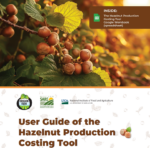
User Guide of the Hazelnut Production Costing Tool
Hazelnut growers can use this tool to estimate their costs of production. This information by Oregon Tilth can be used to help growers better understand their cost structure and explore how changes to production practices, yields and price will impact net returns and long-term viability. The link to the tool is included in the guide.
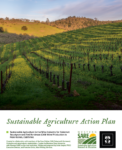
CAB Collective Sustainable Agriculture Action Plan
The Sustainable Agriculture Action Plan for Cabernet Sauvignon and red Bordeaux (CAB) Wine Production in Paso Robles is a document developed by the Paso Robles CAB Collective winegrape growers, winemakers, marketers, proprietors, and other wine industry stakeholders for under a pilot grant program by Western SARE.
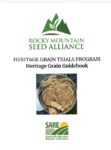
Heritage Grain Guidebook
From 2016 through 2021, Rocky Mountain Seed Alliance (RMSA) worked with a grassroots network of nearly 200 grain growers in varying climates, initially across the Western United States and eventually growing nationally and globally, in trialing over 250 varieties of ancient and heritage grains including Indigenous and alternative (pseudo) grains to determine varieties that can thrive in the changing climate conditions of the 21st century. Through this effort, 20 of the most adaptive and resilient varieties of cereal grains, including wheat, barley, and rye, of which there was enough seed stock, were selected for formal replicated research trials at four locations in the Mountain West. Results of both the participatory grassroots trials and the research trials, including grower and grain profiles, are documented in this manual in an effort to inform and inspire others to grow these unique varieties of grains, and to support regionalized grain networks and localized food systems.
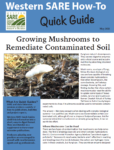
Growing Mushrooms to Remediate Contaminated Soil
Mushrooms can bio-remediate certain contaminated soils, although it's not a simple or foolproof process. But for someone interested in mushrooms or already growing them, it can be work the effort.
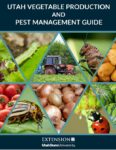
Utah Vegetable Production & Pest Management Guide
Partially funded by Western SARE, the Utah Vegetable Production and Pest Management Guide is inclusive to all growers, whether commercial or hobbyist. Although content is specific to Utah, most content applies to the Intermountain West states. The book includes twelve chapters of specific production methods and comprehensive pest and treatment recommendations for crops representing brassicas, […]
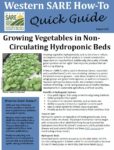
Growing Vegetables in Non-Circulating Hydroponic Beds
Growing vegetables hydroponically, such as bok choy or lettuce, can improve access to fresh produce in remote communities dependent on imported food. Additionally, the quality of locally grown produce can be higher than imported produce that can wilt during shipping. Download PDF
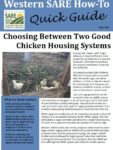
WSARE Quick Guide: Choosing Between Two Good Chicken Housing Systems
Quick guide to choosing between chicken caging systems.
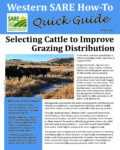
WSARE Quick Guide: Selecting Cattle to Improve Grazing Distribution
Quick guide summarizing what you can do to select cattle to improve grazing distribution.
Photosynthesis & Hydroponics Lesson & Demonstration
Mt. Lata Farm in America Samoa created a Teachers' Resource Tool Kit with lesson plans on growing vegetables using hydroponics. This is one sample. For more information, contact the Project Leader .
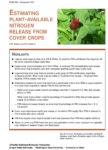
Estimating Plant-Available Nitrogen Release from Cover Crops
This Oregon State University fact sheet explains the basics of plant-available nitrogen (PAN); when to kill cover crops for the maximum PAN benefit; step-by-step instructions on how to perform site-specific measurements to predict PAN from your cover crop; and case studies from the Willamette Valley.
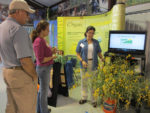
A Sunn Hemp Cover Crop for Soil Health and Nematode Management
These University of Hawaii fact sheets and virtual field day explain how to use sunn hemp as a cover crop to control weeds, nematodes and other pests, add soil nutrients, prevent erosion, and contribute to a more robust and complex community of beneficial nematodes. Available fact sheets include:
Sustainable Agriculture Farming Systems Project
Public concerns regarding pesticide misuse, food safety, water use and contamination, and depletion of non-renewable resources have motivated the reevaluation of some of the practices of conventional agriculture and the exploration of alternative, more sustainable approaches to growing food. In 1988, the Sustainable Agriculture Farming Systems (SAFS) project was established at the University of California’s […]
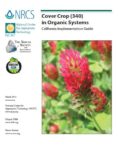
Cover Crops in Organic Systems: California
This is a collaborative project to build the capacity of conservation professionals to assist organic and transitional farmers in planning and implementing conservation practices through the Environmental Quality Incentives Program Organic Initiative. This guide is part of a series of guides created by Oregon Tilth for use by NRCS staff in the Western Region. This document provide an overview […]
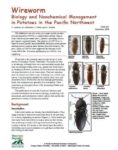
Wireworm Biology and Nonchemical Management in Potatoes
This bulletin is one of a series on organic potato production developed by OSPUD, a collaboration among Oregon State University personnel and 11 farmers operating diversified organic vegetable farms. The purpose of OSPUD is to improve potato quality and profitability through a participatory learning process and on-farm, farmer-directed research. The first two years of OSPUD […]
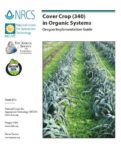
Cover Crops in Organic Systems: Oregon
This document provides an overview of how the USDA Natural Resources Conservation Service NRCS Cover Crop 340 conservation practice can be implemented on organic operations in Oregon.
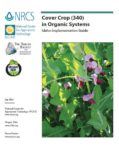
Cover Crops in Organic Systems: Idaho
This document provides an overview of how the USDA Natural Resources Conservation Service NRCS Cover Crop 340 conservation practice can be implemented on organic operations in Idaho.
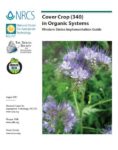
Cover Crops in Organic Systems
This document provide an overview of how the USDA Natural Resources Conservation Service NRCS Cover Crop 340 conservation practice can be implemented on organic operations in the Western Region.
Pineapple Production in CMNI
Farmer Joe Borja showcases his increasing production of pineapple in the Marianas Islands.
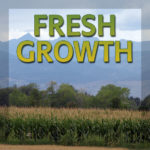
Fresh Growth Podcast
Fresh Growth: Approaches to a More Sustainable Future from Western Ag Practitioners introduces you to farmers and ranchers from around the western United States who are finding innovative sustainable practices that enrich the natural resources we all care about. These successful multi-generational operations experiment with new ideas and are making it pay. Listen in as […]

Adapting Cut Flower Production for Utah’s Climate and Soils
Sustainable Agriculture Fact Sheet July 2020 State: Utah Commodity: Cut Flowers Need: Science-based fertilizer and production recommendations for a new and growing industry Summary: Growing cut flowers as a high-value crop has recently become popular across Utah because of the crop’s unmatched profitability and small space requirements, yet minimal research and cultivation information […]